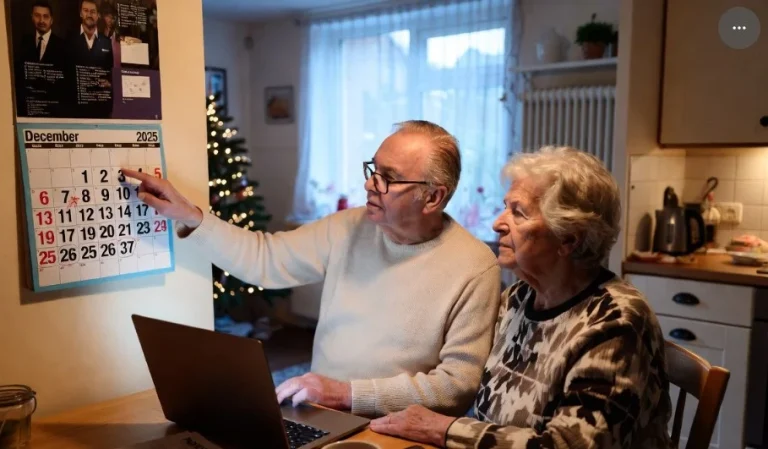Understanding how old a car needs to be to be tax exempt in the UK is essential for classic vehicle owners and enthusiasts. The government provides financial relief through historic vehicle status, but eligibility depends on more than just age.
With evolving regulations and a rolling exemption rule, knowing the right criteria can help avoid unnecessary charges. This guide explains the qualifying age, application process, and key conditions for vehicle tax exemption in the UK.
What Is Vehicle Tax Exemption in the UK?

Vehicle tax exemption in the UK refers to the legal removal of the requirement to pay Vehicle Excise Duty (VED) for eligible vehicles. While most vehicles on public roads must pay VED annually, the government recognises that certain vehicles, especially older ones with limited usage, may be eligible for exemptions.
The DVLA grants vehicle tax exemption to specific classes of vehicles, with one of the most well-known categories being historic vehicles. This exemption is designed to encourage the preservation of motoring heritage while acknowledging that older vehicles typically produce lower annual emissions due to limited use.
At What Age Is a Car Considered a Historic Vehicle?
A vehicle in the UK is considered historic for tax exemption purposes when it is at least 40 years old. The government uses a rolling exemption model. This means that each year, the cut-off date for eligibility moves forward by one calendar year on the 1st of April.
For example, in the 2025/26 tax year, any car built before 1 January 1985 qualifies for the exemption. In the following year, the qualifying date will move to 1 January 1986.
Owners should be aware that the build date, not the registration date, determines eligibility. If a car was built in 1984 but registered in 1986, it may still qualify, provided proof of the actual build date is supplied to the DVLA.
How Does the 40-Year Rule for Car Tax Exemption Work?
The 40-year rule is a mechanism by which the DVLA defines historic vehicles for tax purposes. Here is how it functions:
- It is a rolling system, not fixed.
- Every 1 April, the rule updates to include vehicles that were manufactured 40 years prior to the current year.
- The exemption is not automatic; owners must actively apply.
- The vehicle’s manufacture date, not registration date, determines eligibility.
To illustrate how this rule is applied, refer to the following table:
| Tax Year | Vehicle Must Be Built Before | Eligible to Apply From |
| 2025/26 | 1 January 1985 | 1 April 2025 |
| 2026/27 | 1 January 1986 | 1 April 2026 |
| 2027/28 | 1 January 1987 | 1 April 2027 |
It is important for owners to ensure the DVLA has the correct manufacture date on record. In some cases, especially with older models, the V5C may only list the registration date. This may require the owner to provide additional documents, such as a manufacturer’s certificate or data from a recognised car club.
What Types of Vehicles Qualify for Tax Exemption?

Not all vehicles automatically qualify for tax exemption simply because they are old. The UK government, through the DVLA, has set out specific categories and conditions under which vehicles can be considered for historic status and become eligible for Vehicle Excise Duty (VED) exemption.
A vehicle must be at least 40 years old to be considered for exemption, but age alone is not the only factor. The type of vehicle, how it is used, and whether it has been substantially altered all play a role in determining eligibility. Below are the main categories of vehicles that typically qualify:
1. Private Classic Cars
These are the most common type of tax-exempt vehicles. Classic cars that were manufactured more than 40 years ago and are kept in original or near-original condition can qualify for historic vehicle status. They must be used for private purposes only and not for any form of commercial activity.
Examples include:
- Vintage saloon cars
- Classic British sports cars
- Collector’s vehicles kept for shows or exhibitions
2. Motorcycles
Motorcycles that meet the 40-year age requirement are also eligible for tax exemption. As with cars, the exemption is dependent on the vehicle’s manufacture date and non-commercial usage.
Motorcycles are particularly popular among collectors due to their low maintenance costs and the simplicity of verifying eligibility.
3. Light Goods Vehicles (LGVs) and Vans
Some light commercial vehicles, including vans, may also qualify for exemption if they are over 40 years old and no longer used for business or commercial purposes. If such a vehicle is retained purely for private or historic interest, it can be reclassified as historic.
Important to note: If a van or light goods vehicle is still used for work or trade, even occasionally, it will not be eligible for exemption.
4. Buses and Coaches
Privately owned historic buses and coaches can qualify, provided they meet the 40-year age requirement and are not operated for commercial passenger transport. These vehicles are often preserved by enthusiasts, charities, or historical transport groups and displayed at events.
5. Military Vehicles
Decommissioned military vehicles that have been released into private ownership and are over 40 years old can qualify for tax exemption. This includes classic army trucks, Land Rovers, and other ex-military vehicles that are preserved in their original form.
Additional documentation may be required to prove their military background and build date, especially if they were not originally registered with civilian authorities.
6. Agricultural Vehicles
Older agricultural vehicles such as tractors and farm utility vehicles may also qualify, provided they meet the age threshold and are not in active commercial use. These are often used for heritage displays or maintained as part of farming history collections.
7. Specialist and Rare Vehicles
Some specialist vehicles, including hearses, fire engines, or custom-built show cars, can be eligible for tax exemption if they are over 40 years old and meet all criteria. However, these often require further investigation and supporting documentation, particularly if their registration history is incomplete or unclear.
Usage Restrictions and Conditions
While these vehicles can qualify based on type and age, they must also adhere to strict usage restrictions to maintain tax-exempt status:
- No commercial use: The vehicle must not be used for business, hire, or reward.
- No substantial modifications: Vehicles that have undergone major changes to engine, body, chassis, or suspension may not be eligible.
- Accurate classification: The DVLA must classify the vehicle as “Historic” in the V5C document.
In many cases, owners may need to present proof of original specifications or provide support from recognised clubs or manufacturers to establish eligibility. Kit cars and heavily customised vehicles, even if over 40 years old, are often subject to closer scrutiny and may not qualify.
Is a Historic Vehicle Also Exempt from MOT?
In most cases, historic vehicles that qualify for VED exemption are also exempt from the annual MOT test. However, this exemption depends on the vehicle meeting further conditions.
The vehicle must:
- Be at least 40 years old
- Not have undergone substantial changes in the last 30 years
Substantial changes refer to major modifications such as:
- Replacement of the original engine with a significantly different one
- Changes to the chassis or body structure
- Alterations to the suspension or braking system
If a vehicle has been heavily modified, it must still undergo annual MOT testing even if it qualifies for road tax exemption. To declare MOT exemption, the owner must submit a V112 form when applying for the annual tax renewal.
How Can Someone Apply for Vehicle Tax Exemption?

Once a vehicle reaches the age threshold of 40 years, owners can apply to reclassify it under the historic vehicle tax class. The application is not automatic and involves several steps.
Application Process
- Visit a Post Office branch that handles vehicle tax
- Bring the V5C logbook (vehicle registration certificate)
- Include a valid MOT certificate or V112 MOT exemption form
- Submit a V11 reminder letter if available
- Provide proof of build date if different from registration
The vehicle’s tax class will be changed from “Private/Light Goods” or similar to “Historic”. It is essential to ensure the Post Office used is authorised to carry out tax class changes. If supporting documentation is missing or unclear, the DVLA may request further evidence or reject the application.
Annual Tax Process
Even after receiving the exemption, owners must still “tax” their vehicle each year. While the cost is £0, this step is legally required to keep the vehicle on the road.
Are There Any Exceptions or Special Cases to Be Aware Of?
There are specific cases where a vehicle might not qualify, even if it is over 40 years old. These include:
- Commercial use: Vehicles used for business or income-generating activities do not qualify
- Substantial modifications: Heavily altered vehicles may fail to meet historic status
- Kit cars and imports: These may require special approval and evidence due to non-standard classification
The DVLA evaluates each application on a case-by-case basis, especially for imported vehicles or those with missing manufacturing data. In cases of ambiguity, professional documentation such as heritage certificates from manufacturers or clubs can support an application.
What Are the Benefits of Registering a Vehicle as Historic?
Registering a vehicle as historic in the UK offers several practical and financial advantages. Beyond the well-known benefit of tax exemption, historic classification can also reduce the administrative burden of ownership and contribute to the preservation of motoring heritage.
However, to enjoy these benefits, the vehicle must meet the required eligibility criteria and be correctly registered with the DVLA under the “Historic” tax class.
Here’s a breakdown of the key advantages:
1. Exemption from Vehicle Tax (VED)
The most significant benefit is the exemption from paying Vehicle Excise Duty (VED). Once a car, motorcycle, or qualifying vehicle is registered as historic, owners are no longer required to pay the annual road tax fee.
Although the tax still needs to be renewed each year, the cost is reduced to £0, resulting in substantial savings over time, especially for collectors with multiple vehicles.
2. MOT Exemption for Eligible Vehicles
Vehicles registered as historic and more than 40 years old are typically exempt from the annual MOT test, provided they have not been substantially modified in the last 30 years. This reduces maintenance-related costs and also spares owners from the inconvenience of booking and attending annual inspections.
However, owners are still legally required to keep the vehicle in a roadworthy condition and can be fined or penalised if their car is found to be unsafe, even if it is MOT exempt.
3. Exemption from ULEZ Charges in London
Vehicles registered as historic are also exempt from London’s Ultra Low Emission Zone (ULEZ) charges. For classic vehicle owners living in or near the capital, this can mean significant annual savings.
ULEZ charges can amount to £12.50 per day, so historic exemption can prevent hundreds or even thousands of pounds in fees annually for those who drive in affected areas.
This benefit reflects the fact that most historic vehicles are used infrequently and are not considered a major contributor to urban emissions.
4. Potential for Cheaper Insurance
Many insurance companies in the UK offer specialist classic car insurance policies for vehicles registered as historic. These policies often come with:
- Lower annual premiums
- Agreed value cover
- Limited mileage discounts
- Breakdown and recovery tailored for classic vehicles
Registering a vehicle as historic can help owners access these tailored policies, which typically offer better value than standard car insurance.
5. Enhanced Vehicle Value and Appeal
Historic registration can add credibility and value to a classic vehicle. When selling or displaying the vehicle, having official “Historic” status from the DVLA adds provenance and makes the car more attractive to collectors and enthusiasts. It serves as verification of age, condition, and authenticity, which can influence the market price positively.
Buyers are often more confident in purchasing a vehicle that has already gone through the official process and has a clear tax and MOT status.
How Has the Law on Vehicle Tax Exemption Changed Over Time?

The vehicle tax exemption policy has changed multiple times over the past few decades. Originally, a 25-year fixed exemption was introduced in 1997. However, this was later repealed, and in 2014 the 40-year rolling exemption was reinstated.
The following table summarises key developments:
| Year of Change | Exemption Policy Introduced | Impact on Owners |
| 1997 | 25-year fixed rule | Short-term tax relief for older vehicles |
| 1998 | Rule repealed | No exemption offered for new classics |
| 2014 | 40-year rolling rule | Annual updates to include newer classics |
| 2015 onward | April updates implemented | Allows gradual inclusion of vehicles |
Legislation has continued to evolve, and government agencies such as the DVLA now provide clearer guidance and easier processes for historic vehicle registration.
What Should Owners Know Before Declaring a Car as Tax Exempt?
Owners intending to reclassify a vehicle should take note of the following:
- Verify the build date against DVLA records
- Prepare supporting documents if build date is not clear
- Use a Post Office that processes tax class changes
- Declare MOT exemption if applicable using the V112 form
- Continue to tax the vehicle annually, even at £0
- Maintain roadworthiness regardless of MOT exemption
Failing to follow the proper application process or misclassifying the vehicle can result in penalties or the loss of exemption status. Staying informed about changes to the law is equally important, especially for owners of vehicles approaching the 40-year mark.
Conclusion
Understanding vehicle tax exemption rules is essential for classic car owners in the UK. It helps them legally reduce ownership costs, comply with road laws, and preserve valuable motoring history.
With accurate records, proper classification, and awareness of rules around modifications and usage, enthusiasts can make the most of owning a historic vehicle.
FAQs
What’s the difference between classic and historic vehicles?
A “classic” car is a general term often defined by age or style, while “historic” is an official DVLA tax class for vehicles over 40 years old.
Can a car be tax exempt but still require an MOT?
Yes, if it has been substantially modified in the last 30 years, it won’t qualify for MOT exemption, even if it’s over 40 years old.
How do I check if my vehicle qualifies for historic status?
Check your V5C document for the date of manufacture and compare it to the 40-year rolling cut-off. You may need documentation to verify the date.
What happens if I don’t register my eligible car as tax exempt?
You’ll continue to be charged the standard rate of Vehicle Excise Duty until the exemption is formally applied through the Post Office or DVLA.
Are motorcycles also eligible for tax exemption?
Yes, motorcycles over 40 years old are eligible for tax exemption, provided they meet the same historical and usage criteria.
Does a car lose tax-exempt status if modified?
If the modifications are substantial (engine, chassis, suspension changes), the car may lose its historic classification and related exemptions.
Can you drive a tax-exempt vehicle daily?
Yes, tax-exempt cars can be driven daily, but many owners limit use to preserve condition or for insurance reasons.








